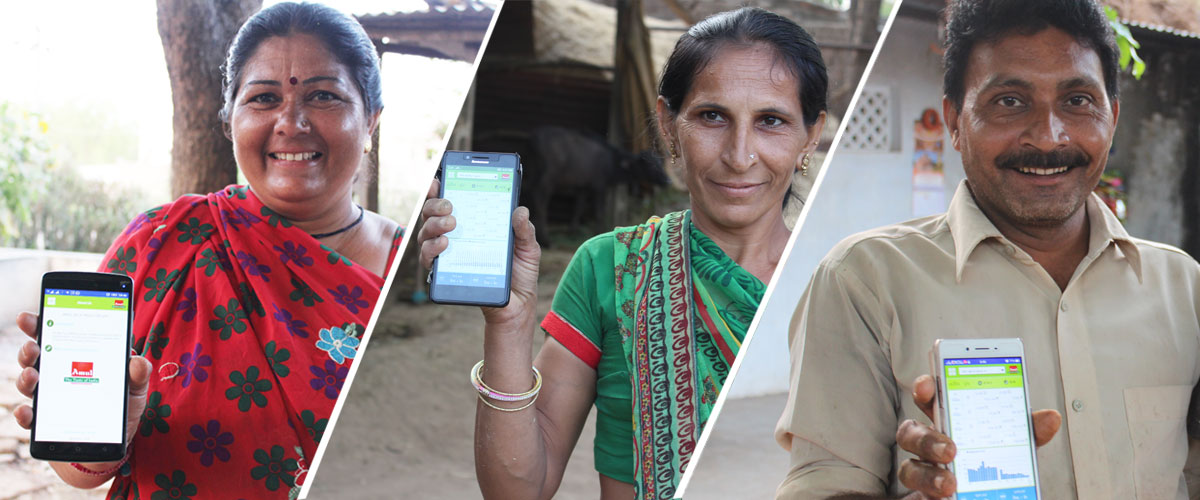2. How the Dairy Industry Works From Cow to Consumer
It is necessary for the Indian Dairy Industry to serve the rising consumer demand with adequate supply of milk. To support this, new and advanced dairy technologies are exploited in dairy projects instated at various levels of dairy farm management. The Dairy Supply Chain or Cow-To-Consumer process as it is generally called is a model for milk procurement and production of assorted products made out of milk.
Let's analyze the dairy production procedure and find out the stages dairy milk goes through until it finally reaches us.
Step 1: Farmers Milking the Milk
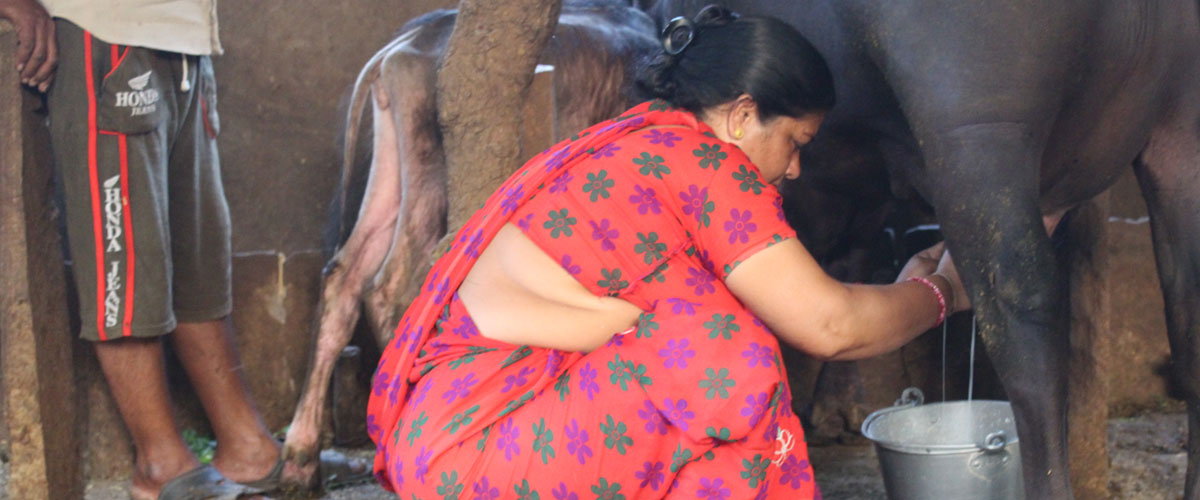
The dairy farming process begins by milking the cattle. A farmer manages a small dairy farm where milking is carried out. Milking is a crucial activity forming the maiden point of milk business chain contributing to the overall milk production. The farmer extracts milk from milch animals, traditionally cows and buffaloes either manually using his hands or mechanically through a dairy farm equipment called milking machine. He milks the cattle two times a day, the first shift takes place in the morning and the latter one in evening. The milk produced during the day is collected into large cans and taken by the farmer to a nearby Village Dairy Cooperative Society (VDCS) for milk testing and analysis.
Step 2: Milk Collection Center
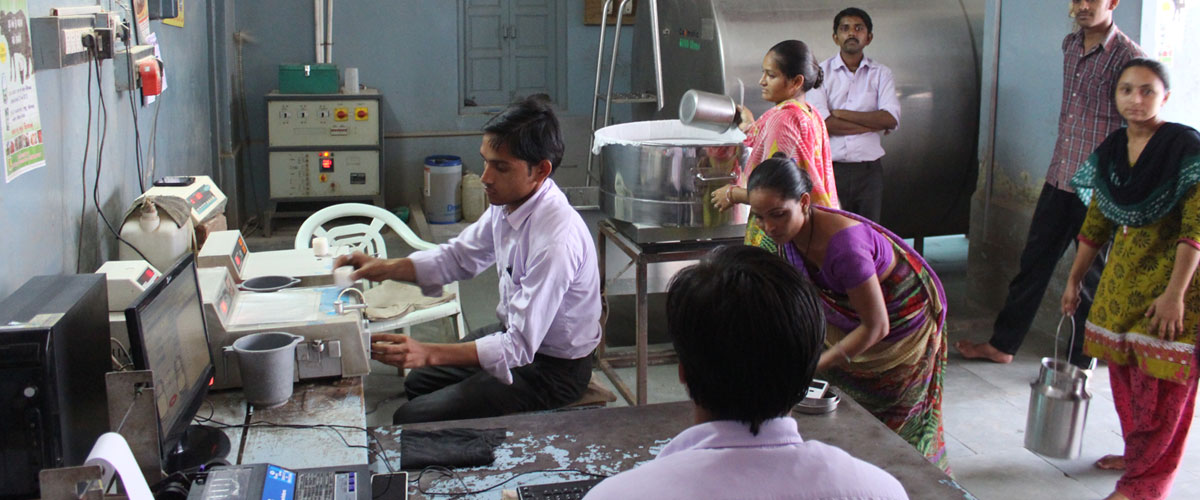
VDCS comprises of milk collection centers that operate at the village level. A center constitutes a panel of villagers who head and operate it and the members comprise of farmers who deposit their milk to VDCS. A member who operates the milk collection center takes a sample of milk brought by the farmer and tests it by means of a dairy milk collection software generally a milk analyzer. The tests are carried out to evaluate the quality of milk based on certain essential parameters like fat content in milk, the amount of Solid Not Fat (SNF) present, the density of milk, and check for any milk adulteration (determined by the proportion of water residues present in milk). SNF consists of proteins (casein and lactalbumin), carbohydrates (lactose) and minerals (calcium and phosphorus) that altogether maintain the required texture of milk. All the resulting values are noted down corresponding to the respective parameters. A final amount of payment is calculated on the premise of the values obtained which is subsequently paid to the farmer. All the milk that is accumulated by VDCS is stored in milk collector, commonly known as Bulk Milk Cooler (BMC).
Step 3: Chilling Center
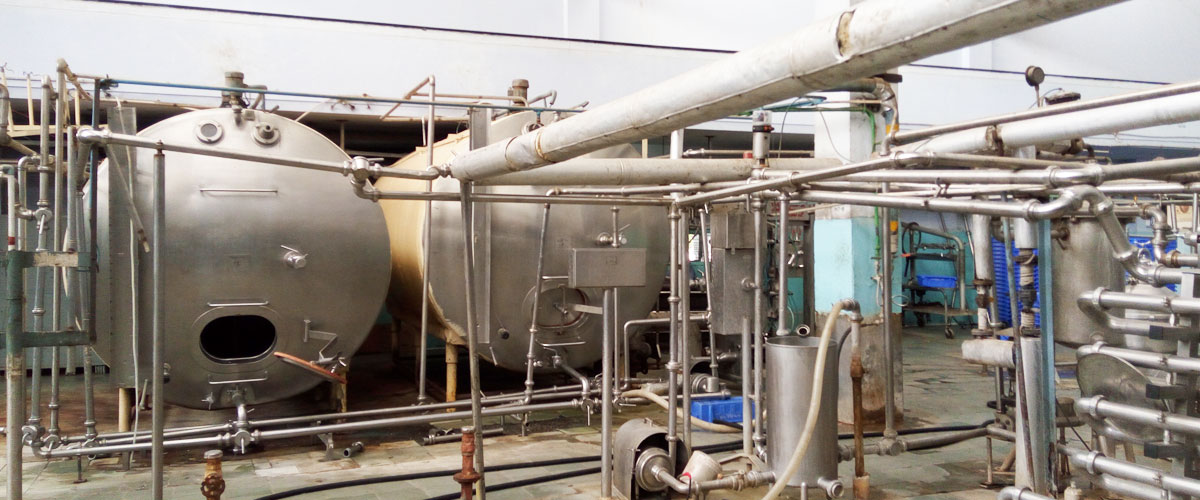
BMC is a large storage tank that holds milk at a cold temperature until picked by milk tanker vans. These tanks are available in varying capacities of 2, 5, and 10 tons. BMC is deployed at all VDCS to preserve the quality of milk, eliminating curdling and adulteration, and spillage of milk. A monitoring system is attached to the BMC that logs and tracks milk quantity, along with a compressor that maintains the temperature of milk inside the tank. Also, an agitator is implanted within the tank that keeps rotating to avoid icing of milk. Power supply through a generator or direct line is also monitored by this system.
Thus, the milk collected at VDCS is supplied to the milk industry for further milk processing and also to export markets. The transportation of milk is done by refrigerated or insulated milk tanker vans. The milk contained in the BMC tanks is emptied into these tankers and transported to the milk industry. These tankers primarily maintain a suitable temperature of the milk to avoid souring while being carried on the way to milk industry. Once the haulers arrive at the dairy industry, they drop the milk in the factory and take on other routes to collect more milk.
Step 4: Milk Processing
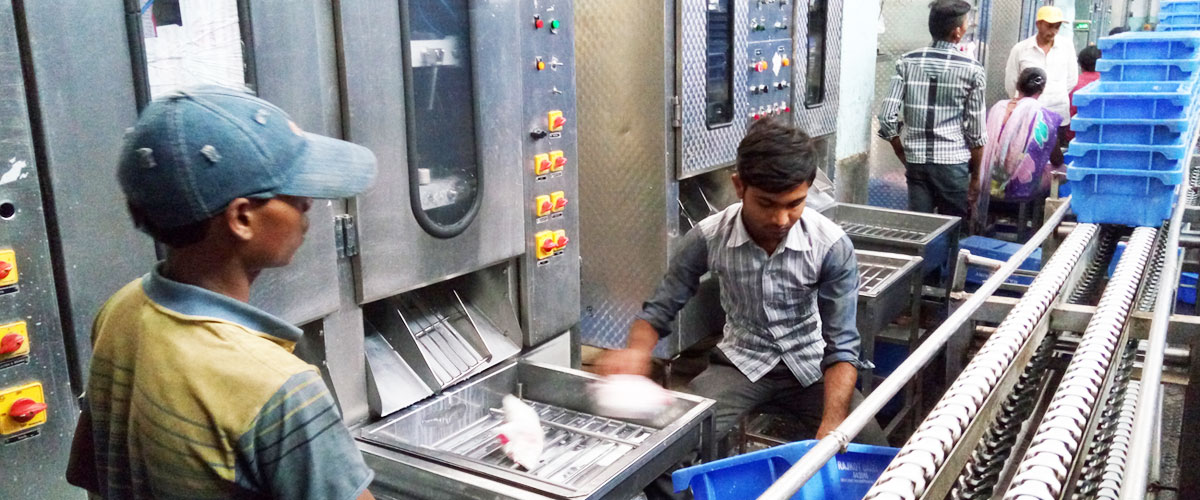
At the dairy plant, the collected milk is processed to produce various products. But before processing, it is tested again to check if the milk quality qualifies the required standard. If it does, milk is sent for further processing otherwise discarded at the initial stage itself. Here, some part of milk is pasteurized and packed in appropriate packaging, generally called milk pouches. These pouches are distributed to all the places within 24 hours. It is termed as liquid milk and supposed to be consumed within the same time frame. While in some pouches, required preservatives are added to increase the shelf life of milk and retain its quality at the same time. This milk is delivered to those places which are located far away from the milk industry and it takes a comparatively longer time to reach there.
The remaining part of milk undergoes various necessary procedures to derive other dairy products like cheese, cream, butter, powdered and condensed milk, yogurt, ice-creams, chocolates, and much more. Each product that is derived from milk follows a unique process.
Step 5: Milk and Milk Products Distribution
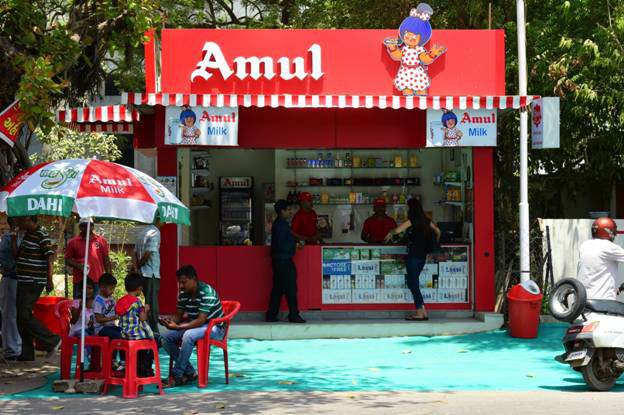
Later, the pasteurized milk and other milk products are packed in sterilized and durable packaging. Sufficient precautionary measures are taken while packing the products to retain the quality and make them long-lasting. Lastly, these products are marketed and distributed to various retailers and wholesalers who later sell them to consumers.
5. Main Issues/Challenges
Milk Adulteration
Milk is diluted with water, milk thickening agents, and detergents that are harmful and contaminated. This milk is then packed and sold on retail prices. Such synthetic adulterants also include deadly chemicals like ammonium sulfate, maltodextrin, urea, starch, foreign fat, and sodium hydroxide (caustic soda) which are highly hazardous. These additives not only lower the natural value and quality of milk but also cause serious health complications like food poisoning, gastronomical diseases, heart ailments, cancer and often prove fatal.
Manipulation of Milk Data
It is frequently observed that farmers are protesting against manipulation of milk data. The situation occurs when farmers deposit their milk at VDCS and gain significantly less payment on the milk than the due amount. It happens because the value of their milk in terms of Fat and SNF are often tampered to decrease the milk value and pay less money to the farmers. The difference in the payment eventually lands into the pockets of the middlemen, compelling farmers into heavy debt conditions.
Change in Fat and SNF Rates
Frequent changes in Fat and SNF rates pose a hurdle on a stable payment to farmers. They are often found to be curbing expenses to manage cattle and their milk business. When specific rates for Fat and SNF are passed to lower milk collection centers as decided by the higher federation, the members of the milk collection center deceive the milk producers by hiding the actual rates. They show them the decreased, manipulated rates. This benefits the members to seize the difference occurring in the payment, thereby leaving farmers with minimal profit.
6. Solutions/Measures Undertaken By Union and Government
Fat and SNF Calculating Machine
Many villages in India have begun using automatic Fat and SNF calculating machines that provide simplicity of calculations and accuracy of values. These machines come with security mechanisms that do not allow data manipulation. These devices analyze and test the milk quality to determine values for predefined parameters such as Fat, SNF, water proportion, and milk density. The resulting values are stored in a centralized database connected to a software.
Common Software for All VDCS
In order to attain transparency in the milk collection process, it is necessary to manage consistent milk data which can be easily accessed by all the users of the system. This feature is accomplished by software applications that are specifically built to automate the milk collection process and ease out the related activities. The system operates at village level and is common across the platform. The data so obtained after required tests are carries out are stored at a central location connected to the cloud (internet). A constant cloud connectivity ensures reliability in terms of inhibiting loss of data.
" Our objective is to reach out to and connect all 3.6L farmers, 18,500 VDCS, and 18 Milk Unions on one common platform.
R S Sodhi quote "
Direct Communication with Milk Producers
Since some time, the government has been insisting on the extensive utilization of technology in the dairy sector to increase productivity. Many advanced techniques have been deployed and are regularly being used to eliminate the shortcomings in the dairy industry. One such solution presented by the government is to bring dairy industry and the farmers on one common platform and persuade direct communication. This leads to improved transparency and greater efficiency by the government to resolve problems and challenges being faced by the milk producers.
The mindset of people is changing and so is the nation. India is on its way to digital transformation and become a developed nation. Soon, it will turn possible to what seemed to be next to impossible on the surface.
Visit Prompt AMCS Page
